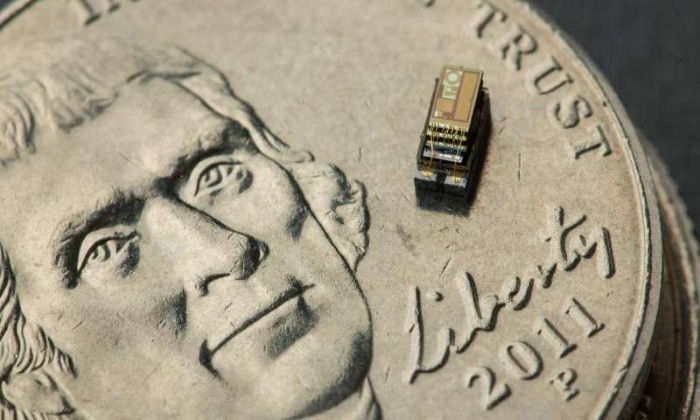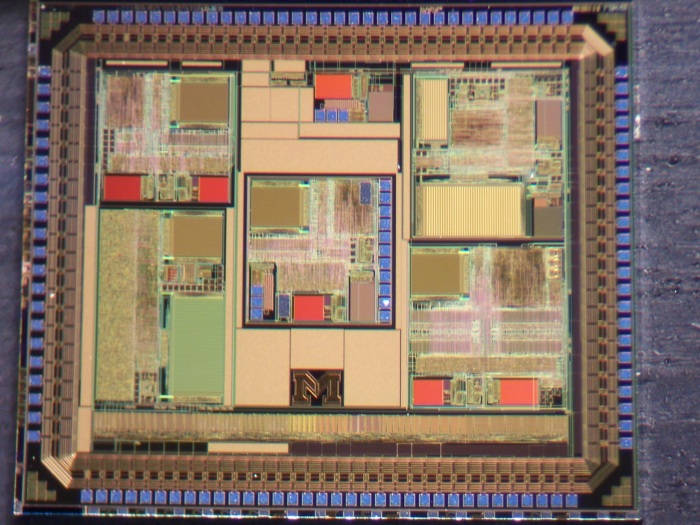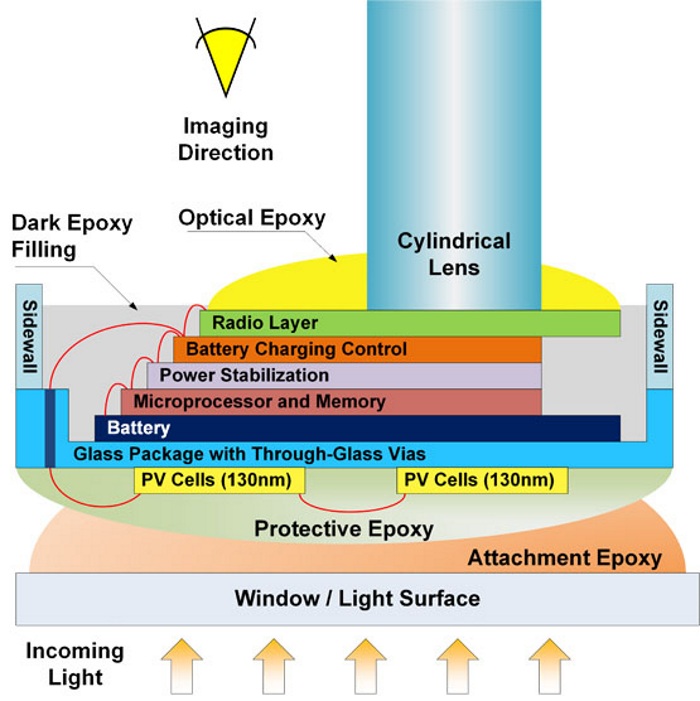
The image you see above is the Michigan Micro Mote (M3 ), officially dubbed the world's smallest computer. Despite its microscopic size, it is a fully functional device, as a team behind it recently completed the creation of a fully autonomous system that allows it to act as a smart sensing system.
“To be 'complete,' a computer system must have an input of data, the ability to process that data — meaning process and store it, make decisions about what to do next — and ultimately, the ability to output the data,” said David Blaauw, one of the faculty members behind the creation of the Michigan Micro Mote.

Sensors serve as the Mote’s input, and radios act as its output. Solar cells power the battery using ambient light, and while this might seem like a simple solution for such a small system, the path in getting there was not so clear.
“As you shrink down in size, the percentage of the system tends to be dominated by the battery,” explained Blaauw. “It's actually not hard to make chips small, but it is hard to make them low power. We could have very small chips, but we'd still end up with really large batteries.”
What they ended up using is a 1mm2 solar cell that is able to produce 20nW of power. The result is a device that can harvest enough energy from ambient light to run perpetually. Its standby power consumption is just 2nA which, per the researchers, is “a million times less power than the average mobile phone consumes while on standby.”
Operating at low power during the device’s down time is one of the many the reasons why this device is being deemed a success.
In terms of some of the other noteworthy design features, the M3 is built in stacked layers that communicate through a universal interface protocol, Mbus.
Each M3 computer contains the following layers:
1. Solar cell and optical communication photo cell
2. Harvester control electronics layer
3. Radio layer
4. Sensor interface layer (temperature sensor and capacitive interface electronics)
5. Layer with capacitors for stabilizing the power supplies (“decap” layer)
6. Processor + memory + power regulation layer
7. Battery
8. Optional layer for pressure sensor, imager, etc.

By exchanging one layer with another, the team was able to achieve a whole new sensing system that can collect and transmit data as far as 6 feet. They can also monitor a room for motion or changes in pressure and temperature, and send all recorded data to a base station for user analysis.
In terms of what’s ahead for the M3 , Blaauw said the team wants to get the sensors to talk to one another, and extend their range to about 65 feet.
David Wentzloff, another faculty member who worked on the computer, is leading this endeavor.
Via the University of Michigan
Advertisement
Learn more about Electronic Products Magazine





